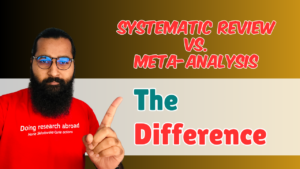The Fascinating World of Statistics: Exploring Its Types and Applications 📊🌍
Welcome, curious minds and data lovers! Today, we’re diving into the vibrant and essential world of statistics. This field is not just about numbers and graphs; it’s a powerful tool that helps us understand the world around us. Whether you’re a student, a professional, or just a curious individual, understanding the types and applications of statistics is incredibly rewarding. Let’s embark on this numerical adventure!
What is Statistics? 🤔🔢
Statistics is the science of collecting, analyzing, interpreting, presenting, and organizing data. It’s like the GPS in the journey of decision-making, guiding us through the maze of information with clarity and precision.
The Two Main Types of Statistics 🌟
Statistics is broadly divided into two categories, each with its unique focus and methods:
1. Descriptive Statistics: Painting the Big Picture 🖼️
- Role: Descriptive statistics summarize and describe the features of a dataset.
- Key Features: Includes measures like mean, median, mode, range, and standard deviation.
- Example: Imagine you have data on the heights of students in a school. Descriptive statistics will tell you the average height, the range of heights, and how varied the heights are.
2. Inferential Statistics: Making Predictions and Decisions 🔮
- Role: Inferential statistics help in making predictions or inferences about a population based on a sample of data.
- Key Methods: Includes hypothesis testing, confidence intervals, and regression analysis.
- Example: If you want to know if a new teaching method is effective, you might test it on a sample of students and use inferential statistics to decide whether the results can be generalized to all students.
Delving Deeper: Subtypes of Statistics 🧐
- Parametric Statistics: Assumes the data follows a certain distribution, like the normal distribution. Used when data is numerical and normally distributed.
- Non-Parametric Statistics: Does not assume a specific distribution. It’s useful when data is not numerical or doesn’t fit a normal distribution.
Real-World Applications of Statistics 🌐
- Healthcare: From designing clinical trials to analyzing patient data, statistics are vital in healthcare.
- Economics and Business: Used for market analysis, risk assessment, and decision-making in business strategies.
- Government Policy Making: Helps in census data analysis, policy planning, and public administration.
- Environmental Science: Used in analyzing climate data, assessing biodiversity, and environmental risk assessment.
- Education: Helps in evaluating educational methods and policies, and in academic research.
The Importance of Statistical Literacy 📚💡
In today’s data-driven world, statistical literacy is more than an academic requirement; it’s a necessary skill for informed decision-making, critical thinking, and navigating everyday life with a data-informed perspective.
Conclusion: Embracing the Power of Statistics 🚀
Statistics is not just about numbers; it’s about understanding and interpreting the stories behind the data. By grasping the different types of statistics and their applications, we gain the power to make informed decisions, solve problems, and understand the world in a more meaningful way.

Systematic Reviews and Meta-Analysis: Why Every Researcher Must Learn?






I think we should apply statistics and ML on positive/negative behaviors of people/organizations towards private sector education or one syllabus curriculum.
After reading this blog and watching its topics video, I assume that WH questions for data gathering are metadata, and applying WH questions to data is called EDA.
AOA, After reading this blog, I found it to be a comprehensive and engaging introduction to the world of statistics. This blog effectively explains the purpose and importance of statistics in various fields, such as healthcare, economics, and education. It also provides a clear distinction between descriptive and inferential statistics, along with examples and real-world applications. This blog serves as a valuable resource for beginners looking to understand the types and applications of statistics in a concise and accessible manner. ALLAH PAK ap ko dono jahan ki bhalian aata kry AAMEEN.
Explained very well
Wonderfull Article .. By reading this blog to understand Statistics more easily ..
Specifically explained. I hope will learn more specific knowledge in upcoming blogs. In particular, I could not develop a solid understanding of variance, standard deviation, standard error, and confidence interval.
If 5 students out of 50 students class get 80 percent marks in last 3 exams on this if we say these 5 students will get 80% in next exam. It is inferential stats?
Great sir, very easy way to understand statistics.